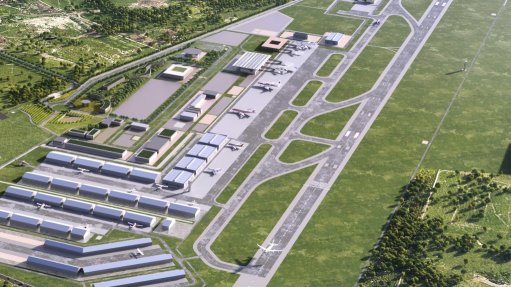Private embrace
Building much-needed public infrastructure and scaling up private-sector participation in the delivery of such infrastructure emerged as the key theme of the first Medium-Term Budget Policy Statement (MTBPS) of the Government of National Unity.
The document includes a full chapter, Chapter 5, dedicated to the issue and framed with an acknowledgement that the quality of infrastructure spending is suboptimal and the quantity inadequate.
The insufficient quantity issue is underlined by the fact that public and private fixed investment levels currently stand at about half of the targeted 30% of gross domestic product set in the National Development Plan.
The quality issue, meanwhile, is visible across all infrastructure subsectors, from road to rail, powerlines to water treatment, where projects have typically run late and over budget and where corruption has often left the intended beneficiaries stranded and taxpayers out of pocket.
The new approach canvassed in the MTBPS is two-pronged.
Firstly, it seeks to improve the internal structures to begin delivering traditional public infrastructure projects more efficiently, including through improved project preparation.
Secondly, there are several initiatives being pursued that are designed to increasingly draw on the capabilities and financial capacity of the private sector, which was by far and away the dominant theme of Chapter 5.
In doing so, the National Treasury is seeking to address a number of issues simultaneously: close the quality and quantity gaps; place less strain on already stretched fiscal resources; and leverage infrastructure to address the country’s big growth problem, given the importance of infrastructure as an economic multiplier.
To achieve these objectives, a series of reforms were outlined to catalyse greater private-sector participation, including crucial reforms to the frameworks and rules governing public-private partnerships at the national and municipal levels.
The most innovative announcement, however, relates to the proposed launch of a credit enhancement instrument to derisk projects for developers and lenders, while mitigating government’s need to add to contingent liabilities.
The instrument has been developed with the help of the World Bank and will initially be used to support independent transmission projects (ITPs).
The National Treasury confirmed that a pilot ITP project was being prepared using a build-operate-and-transfer model, but did not provide further specifics regarding the institutional arrangements.
Nevertheless, ongoing reference was made to the Renewable Energy Independent Power Producer Procurement Programme (REIPPPP) as a “template” for the procurement of public infrastructure, and REIPPPP projects have been procured through a dedicated procurement office.
It was also confirmed that the intention was to broaden the use of the credit-enhancement vehicle, which would be operational by the end of 2025, to other infrastructure sectors, notably water and freight logistics.
Despite the novelty of the instrument, it will be crucial now for government to move swiftly towards actual implementation.
Equally, it will be crucial that Eskom and Transnet fully embrace private-sector participation, rather than doing so selectively in a bid to protect supposed future revenue that has no genuine prospect of materialising any time soon.
Article Enquiry
Email Article
Save Article
Feedback
To advertise email advertising@creamermedia.co.za or click here
Comments
Press Office
Announcements
What's On
Subscribe to improve your user experience...
Option 1 (equivalent of R125 a month):
Receive a weekly copy of Creamer Media's Engineering News & Mining Weekly magazine
(print copy for those in South Africa and e-magazine for those outside of South Africa)
Receive daily email newsletters
Access to full search results
Access archive of magazine back copies
Access to Projects in Progress
Access to ONE Research Report of your choice in PDF format
Option 2 (equivalent of R375 a month):
All benefits from Option 1
PLUS
Access to Creamer Media's Research Channel Africa for ALL Research Reports, in PDF format, on various industrial and mining sectors
including Electricity; Water; Energy Transition; Hydrogen; Roads, Rail and Ports; Coal; Gold; Platinum; Battery Metals; etc.
Already a subscriber?
Forgotten your password?
Receive weekly copy of Creamer Media's Engineering News & Mining Weekly magazine (print copy for those in South Africa and e-magazine for those outside of South Africa)
➕
Recieve daily email newsletters
➕
Access to full search results
➕
Access archive of magazine back copies
➕
Access to Projects in Progress
➕
Access to ONE Research Report of your choice in PDF format
RESEARCH CHANNEL AFRICA
R4500 (equivalent of R375 a month)
SUBSCRIBEAll benefits from Option 1
➕
Access to Creamer Media's Research Channel Africa for ALL Research Reports on various industrial and mining sectors, in PDF format, including on:
Electricity
➕
Water
➕
Energy Transition
➕
Hydrogen
➕
Roads, Rail and Ports
➕
Coal
➕
Gold
➕
Platinum
➕
Battery Metals
➕
etc.
Receive all benefits from Option 1 or Option 2 delivered to numerous people at your company
➕
Multiple User names and Passwords for simultaneous log-ins
➕
Intranet integration access to all in your organisation





















